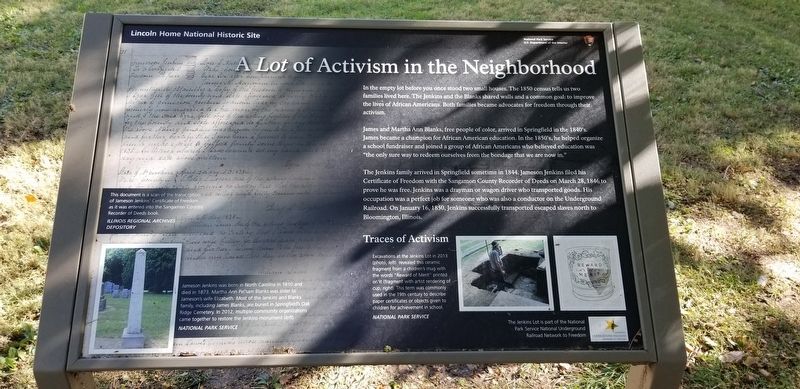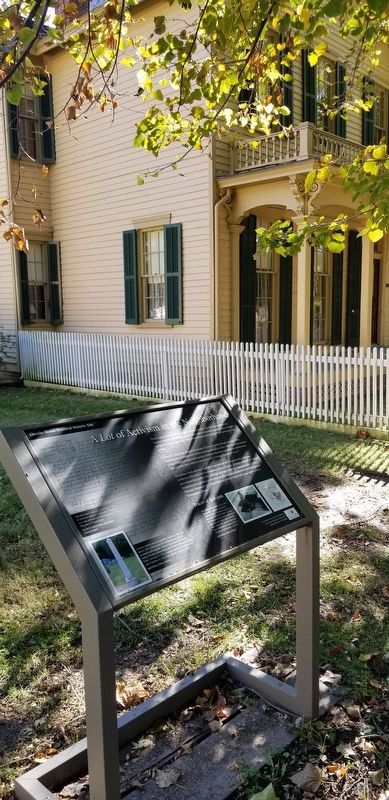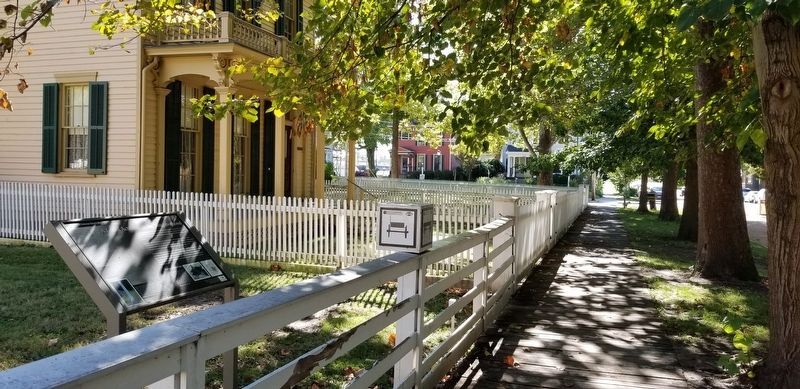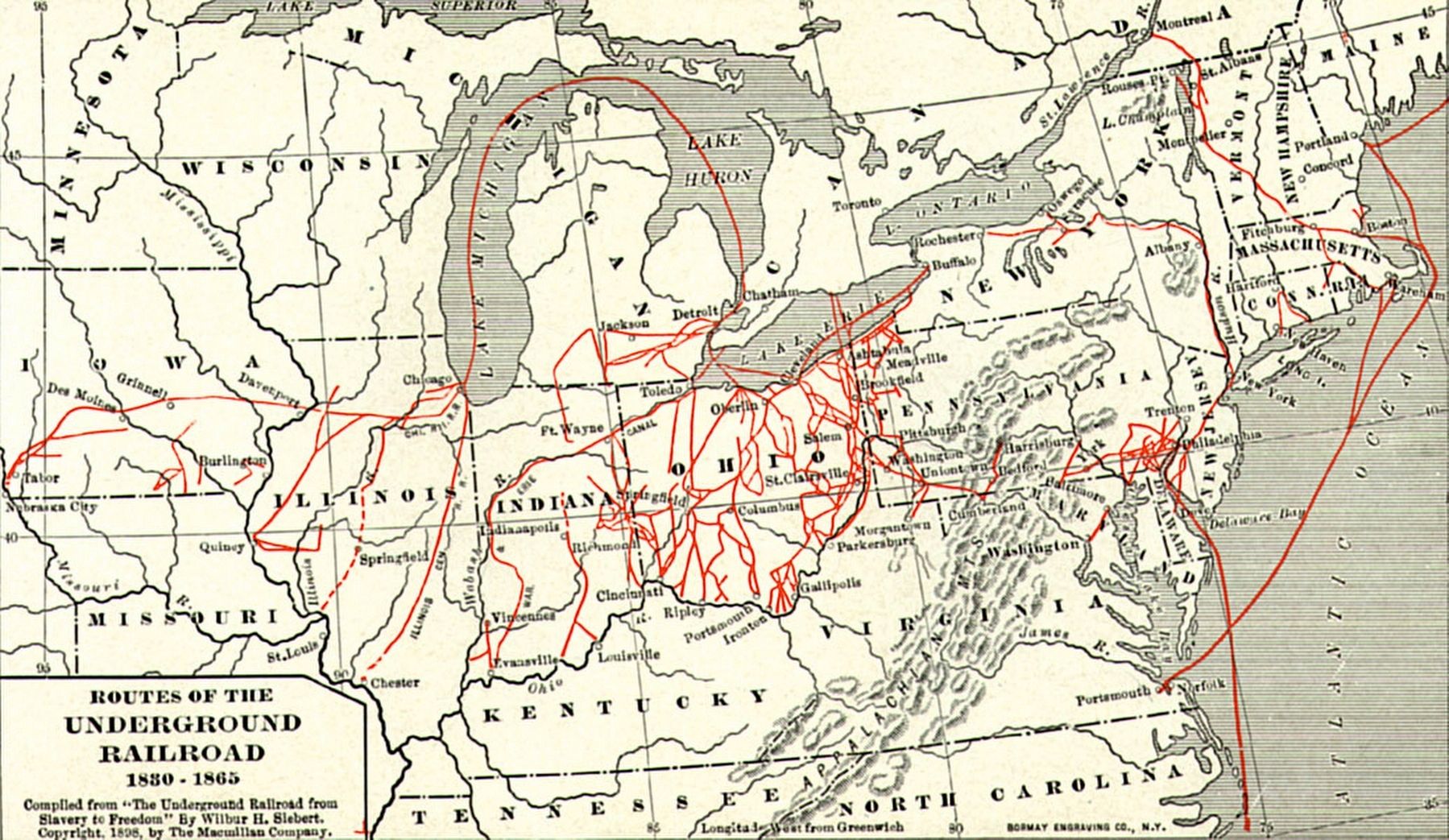Springfield in Sangamon County, Illinois — The American Midwest (Great Lakes)
A Lot of Activism in the Neighborhood
James and Martha Ann Blanks, free people of color, arrived in Springfield in the 1840's. James became a champion for African American education. In the 1850's, he helped organize a school fundraiser and joined a group of African Americans who believed education was "the only sure way to redeem ourselves from the bondage that we are now in."
The Jenkins family arrived in Springfield sometime in 1844. Jameson Jenkins filed his Certificate of Freedom with the Sangamon County Recorder of Deeds on March 28, 1846 to prove he was free. Jenkins was a drayman or wagon driver who transported goods. His occupation was a perfect job for someone who was also a conductor on the Underground Railroad. On January 16, 1850, Jenkins successfully transported escaped slaves north to Bloomington, Illinois.
Traces of Activism
Excavations at the Jenkins Lot in 2013 (photo, left) revealed this ceramic fragment from a children's mug with the words "Reward of Merit" printed on it (fragment with artist rendering of cup, right). This term was commonly used in the 19th century to describe paper certificates or objects given to children for achievement in school. National Park Service
The Jenkins Lot is part of the National Park Service National Underground Railroad Network to Freedom
Captions
Middle Left: This document is a scan of the transcription of Jameson Jenkins' Certificate of Freedom as it was entered into the Sangamon Country Recorder of Deeds book. Illinois Regional Archives Depository
Lower Left: Jameson Jenkins was born in North Carolina in 1810 and died in 1873. Martha Ann Pelham Blanks was sister to Jameson's wife Elizabeth. Most of the Jenkins and Blanks family, including James Blanks, are buried in Springfield's Oak Ridge Cemetery. In 2012, multiple community organizations came together to restore the Jenkins monument (left). National Park Service
Erected by Lincoln Home National Historic Site - National Park Service, U.S. Department of the Interior.
Topics. This historical marker is listed in these topic lists: Abolition & Underground RR • African Americans • Anthropology & Archaeology. A significant historical date for this entry is January 16, 1850.
Location. 39° 47.795′ N, 89° 38.699′ W. Marker is in Springfield, Illinois, in Sangamon County
. Marker is on South 8th Street, 0.1 miles south of East Jackson Street, on the left when traveling south. The marker is located north of the Robinson House along the sidewalk. Touch for map. Marker is at or near this postal address: 520 South 8th Street, Springfield IL 62701, United States of America. Touch for directions.
Other nearby markers. At least 8 other markers are within walking distance of this marker. The Underground Railroad in Lincoln's Neighborhood (a few steps from this marker); Economic and Ethnic Diversity in Springfield (a few steps from this marker); Henson Robinson House (a few steps from this marker); Politics in the Neighborhood (a few steps from this marker); Sarah Cook House (within shouting distance of this marker); Jesse K. Dubois House (within shouting distance of this marker); Allen Miller House (within shouting distance of this marker); Solomon Allen Barn (within shouting distance of this marker). Touch for a list and map of all markers in Springfield.
Also see . . .
1. Underground Railroad.
The Underground Railroad was a network of secret routes and safe houses established in the United States during the early- to mid-19th century. It was used by enslaved African Americans primarily to escape into free states and Canada. The network was assisted by abolitionists and others sympathetic to the cause of the escapees. The enslaved who risked escape and those who aided them are also collectively referred to as the "Underground Railroad". Various other routes led to Mexico, where slavery had been abolished, and to islands in the Caribbean that were not part of the slave trade. An earlier escape route running south toward Florida, then a Spanish possession (except 1763–83), existed from the late 17th century until approximately 1790. However, the network now generally known as the Underground Railroad began in the late 18th century. It ran north and grew steadily until the Emancipation Proclamation was signed by President Abraham Lincoln. One estimate suggests that by 1850, 100,000 enslaved people had escaped via the network. Source: Wikipedia(Submitted on January 13, 2022, by James Hulse of Medina, Texas.)
2. Jameson Jenkins and the Underground Railroad.
Jameson Jenkins was born in North Carolina sometime around 1810. It is unclear whether he was born into slavery or free, but he was documented as being a free man by 1835. Within ten years, he had left his home state making the potentially risky trek through slave states to reach the free state of Indiana, where he married Elizabeth Pelham. In 1844, they had a daughter, Nancy. The family then traveled on to Illinois, where, presumably upon his arrival in Springfield, Jenkins filed his Certificate of Freedom papers(Submitted on January 13, 2022, by James Hulse of Medina, Texas.)with the Sangamon County Recorder of Deeds, on March 28, 1846. Source: Lincoln Home National Historic SitePublic Domain - Wilbur H. Siebert, The Macmillan Company, 18984. Routes of the Underground RailroadWhole map of the underground railroad. The Underground Railroad was not an actual railroad, but a network of secret routes and safe houses used by black slaves in the United States to escape to free states and Canada.
Credits. This page was last revised on January 13, 2022. It was originally submitted on January 13, 2022, by James Hulse of Medina, Texas. This page has been viewed 164 times since then and 10 times this year. Photos: 1, 2, 3, 4. submitted on January 13, 2022, by James Hulse of Medina, Texas.



